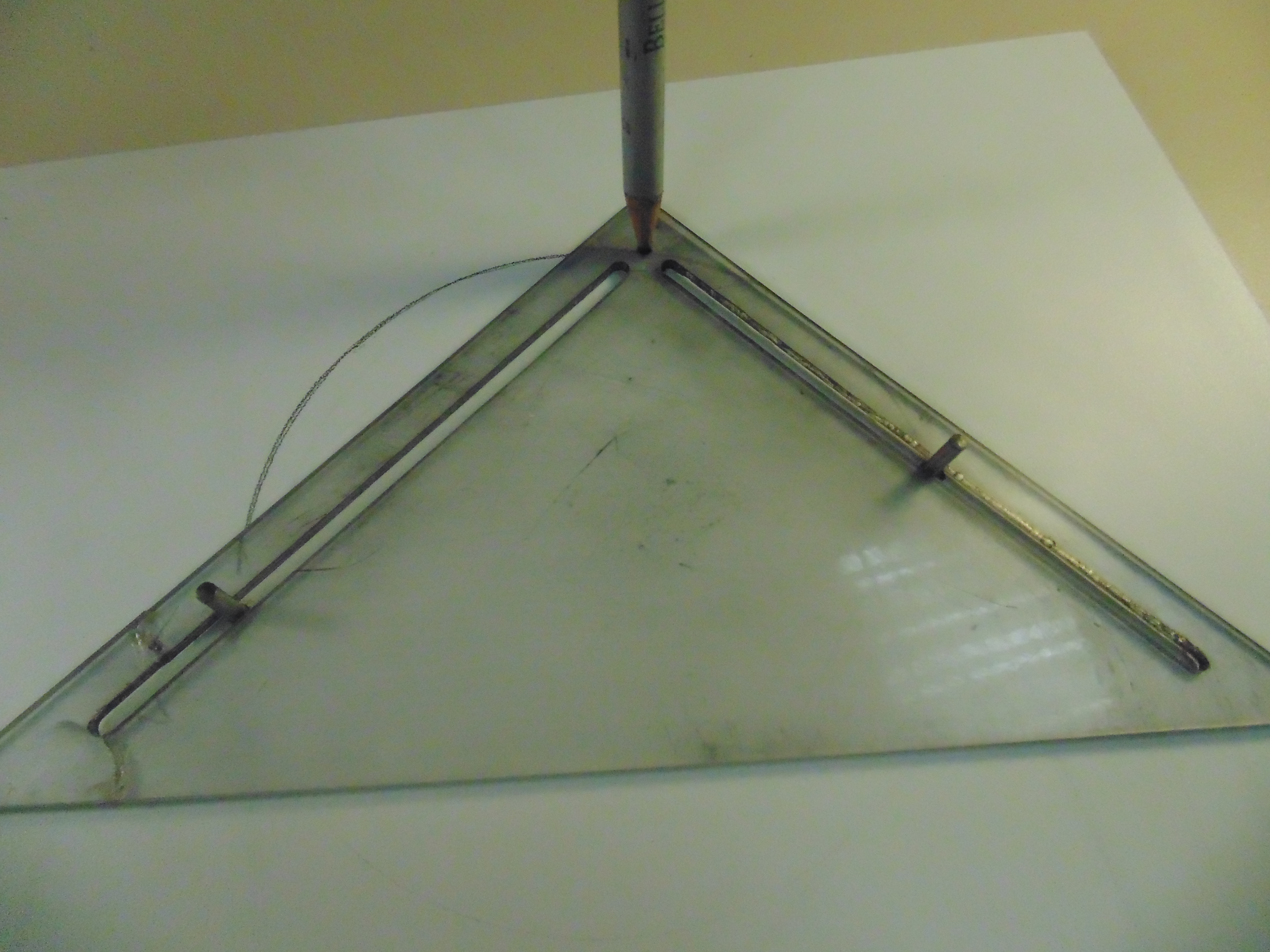CIRCUMFERENCE DRAWING
The most common way to draw a circle is using a compass, but it's not very fun to do that, so here's another way to draw circles, or at least pieces of them.
These mechanisms rely on the Capable Arc Theorem. To see it applied, we fix a circle and also a chord of the same circle. As the chord divides the circle into two arcs, we can choose one of them and take any point on it. Hence, the theorem says that the angle that these points make with the two ends of the string is always the same.

The mechanism then does the opposite: it fixes the angle with two rays, forces them to pass through the ends of the chord and the vertex traces the arc of the circle! The video below shows a little bit of how this mechanism works.
